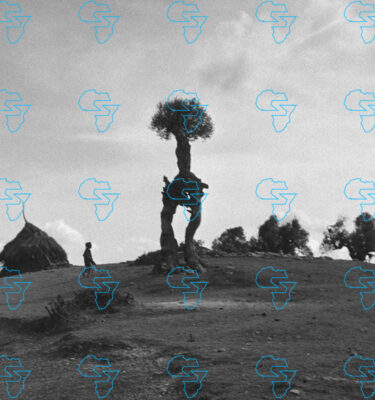
Amhara Regional State, Ethiopia—At dawn, EsatuTesfaye hoists two empty jerrycans onto his donkey and begins the 14-kilometer trek to the nearest fuel depot in East Gojjam. Hours later, he arrives exhausted, only to find a hand-written sign pinned on the gate: “No Benzene No Diesel”.
Esatu’s early morning journey came following the federal government’s most recent round of fuel price hikes in early May 2025, which saw costs rise by 10 Birr per liter for benzene, diesel, and kerosene.
“We were warned there might be shortages,” said Esatu, a smallholder farmer and father of one. Without fuel, there is no tractor, no plowing. Without plowing, no planting. We are going to have to get back to what was.”
Across Ethiopia’s breadbasket, scenes like this are becoming increasingly common. As the Kiremt (rainy season) planting season, accounting for 85 percent of the nation’s agricultural output, reaches its peak, farmers, fertilizer suppliers, and transporters are feeling the burn of a fuel crisis that began to unfold thousands of kilometers and continents away.
The world economy has faced a relentless series of shocks since the COVID-19 pandemic, with the Russia-Ukraine war, Israel-Hamas conflict, followed by the current Iran-Israel escalation, delivering consecutive blows.
– Advertisement –
“Each of these conflicts has triggered ripple effects that reach nearly every country, including Ethiopia,” said Costentinos Berhe (PhD), political analyst and former AU anti-graft commissioner.
He observes the Russia-Ukraine war’s role in pushing global food and fertilizer prices upward, while the Israel-Hamas war inflated shipping costs and disrupted supply chains. Now, the Iran-Israel conflict threatens deeper instability.
“Fuel prices have already spiked sharply. If Iran closes the Strait of Hormuz as threatened, we could face an unprecedented shock, widespread shortages, as well as price surges,” Costentinos cautions.
Maritime insurance premiums have already surged due to increased attacks by Houthi rebels on Red Sea shipping, forcing costly rerouting and delaying shipments. Ethiopia, landlocked and reliant on imports, is feeling the squeeze acutely.
According to Reuters sources, war risk insurance premiums for shipments to the Middle East Gulf have jumped to 0.5 percent from around 0.2 to 0.3 percent a week ago, as risks grow to the critical strait of Hormuz.
The development bodes ill for Ethiopia and its dependency on fuel and fertilizer imports, as well as for farmers like Esatu, who depend on these commodities to survive.
Ethiopia spends over USD five billion annually on fuel imports, sourcing about half its gasoline and diesel from Kuwait, a Gulf nation now enmeshed in the regional conflict. Disruption of supply routes or export cutbacks could severely worsen fuel availability and affordability.
Assegid Gebremedhin, a financial analyst, notes that Ethiopia’s strong trade ties with the Middle East put it at greater risk than “more diversified economies.”
The implications for fuel costs are particularly concerning considering the Ministry of Trade and Regional Integration’s announcement that government has cut off all fuel subsidies beginning this month. Officials cited the need to curb fuel smuggling, address budget deficits, and improve market efficiency as the primary reasons behind the decision to scrap subsidies—a decision supported by the International Monetary Fund (IMF) as part of broader economic reforms.
This means domestic fuel prices will now fully reflect global market fluctuations.
“With subsidies gone, the public absorbs the full shock. If the conflict escalates, prices will rise further,” said Assegid.
Higher fuel prices ripple through the economy, increasing transport and logistics costs that underpin nearly half of production expenses in many sectors.
Ethiopia’s main concern here remains that the country is in its critical rainy season, a period marked by large-scale fertilizer imports, even as delivery challenges persist.
Despite logistical hurdles, the government says it has worked diligently to secure fertilizer ahead of the 2024/25 crop season.
The state-owned Ethiopian Agricultural Businesses Corporation (EAWC) reports that by mid-May 2025, nearly 12 million quintals of fertilizer—around half of the import target—had arrived in Djibouti, with over 11.2 million quintals transported inland for distribution.
The latest shipment included 550,000 quintals of Di-Ammonium Phosphate (DAP) fertilizer.
By early June, total imports had surpassed 12.4 million quintals, with 96 percent moved inland. Additional shipments of 1.56 million quintals of urea and 1.15 million quintals of DAP are expected soon.
“The government’s commitment to timely input availability remains strong despite the crises,” said a source at EAWC, speaking anonymously.
However, fuel shortages and forex constraints continue to delay fertilizer transportation from Djibouti’s ports to rural areas.
“Trucks remain idle without diesel,” a farmer from northern Wello, Amhara region, told The Reporter.
For farmers like Esatu, the combined effect of high fuel costs and delayed fertilizer delivery is nothing less than a crisis.
“In Debre Markos, equipment rental fees have doubled. Some farmers are trying compost instead of fertilizer, but yields suffer,” said a source familiar with depot operations who wished to be unnamed.
Merely three months ago, officials at the Ministry of Agriculture announced plans to distribute over 13 million quintals to farmers all over the country. But, by April 2025 only 68 percent of the intended volume had reached distribution centers, with the Amhara and Oromia regions, which together account for two-thirds of fertilizer demand, especially affected.
“Fertilizer costs sometimes exceed the selling price of crops like teff. Farmers hesitate to invest, risking lower yields and abandoned land,” an agronomist attending an event about farmer managed natural reintegration this week in Addis Ababa told The Reporter.
The International Committee of the Red Cross (ICRC) reported this week that it had provided seeds and fertilizer to 10,500 families across Tigray, Amhara, and Oromia, covering 6,500 hectares and expected to yield 17,000 metric tons of staple crops.
“In hard-hit and remote areas, farmers lack access to quality seeds and fertilizer due to supply chain disruptions and recurrent drought,” said Simone Casabianca-Aeschlimann, head of the ICRC delegation in Ethiopia.
The ICRC report depicts the harsh realities faced by Ethiopian farmers like Fantaye Negash, who lost his home and farming tools in southern Tigray to conflict.
“Rebuilding is hard. Without seeds or fertilizer, cultivation was nearly impossible,” Fantaye is quoted as saying.
In Tigray’s North Western Zone, where land remains littered with unexploded ordnances, the ICRC and Ethiopian Red Cross Society conducted risk awareness sessions for 855 farmers to cultivate safely, says the report.
Meanwhile, the government says it has established a unit to strengthen agricultural finance and help farmers to weather shocks.
The Ministry’s Rural Finance Service Unit (RFSU) was launched this month with support from the United Nations Development Program(UNDP) and other development partners. Officials hope to see the unit improve rural credit and insurance access by coordinating government and private sector efforts, recommending reforms, building data systems, and guiding policy.
The Ministry aims to build sustainable financial services tailored to support smallholder farmers who are vulnerable to climate and market risks, noting that while agriculture employs two-thirds of the population, it currently receives less than 10 percent of total bank credit.
What continues to worry observers, however, is the looming question of food security and inflation in the coming year.
Rising input costs coupled with erratic weather patterns and foreign exchange shortages are driving a dangerous cycle where limited access to finance and skyrocketing prices threaten to undermine agricultural output.
Without urgent intervention, experts warn this cycle could deepen rural poverty and accelerate food insecurity across Ethiopia.
Reports indicate that higher input and transport costs are pushing food prices higher.
In Addis Ababa, transport fares have jumped nearly 70 percent year-on-year, and food inflation reached 32 percent as of May 2025, according to the Ethiopian Statistical Service.
Economists observe that fuel scarcity delays fertilizer delivery, leading to reduced production and higher food prices—a cycle that squeezes both rural producers and urban consumers.
However, the repercussions do not end there—they extend far beyond farms and markets, creating a ripple effect across the entire economy.
As Ethiopia becomes more dependent on agricultural exports to generate foreign currency, disruptions in fuel and fertilizer supply chains threaten to derail export performance. These setbacks risk not only weakening the country’s trade balance but also undermining hard-won gains in rural livelihoods and national food security.
The ongoing instability in the Middle East, particularly the Iran-Israel conflict, has amplified risks along Ethiopia’s import-export corridors. Shipping delays and price volatility are making it harder for exporters to meet international demand. This exposure places added strain on the country’s already fragile trade balance.
The ongoing Middle East conflict also threatens Ethiopia’s export revenues. Over 37 percent of Ethiopia’s exports go to countries in the region, including Saudi Arabia, UAE, and Israel.
“Saudi Arabia is our top meat buyer. If airspace closures happen, our exports will grind to a halt, severely hurting foreign currency earnings,” an exporter told The Reporterspeaking anonymously.
His fears are not unfounded.
Reports from earlier in the week indicate that many countries in the Middle East had indeed shut down their airspaces by late Monday, as Iran struck Al Udeid airbase in Qatar, the largest United States military base in the region, disrupting global aviation traffic.
Airlines cancelled or rerouted several flights to and from the Middle East as Qatar’s Doha airport temporarily halted operations on Monday. Iran said it was retaliating against the US strikes on its nuclear sites over the weekend, according to reports.
Ethiopian Airlines also temporarily suspended both its inbound and outbound flights to Israel last week, losing critical revenue.
The Iran-Israel conflict may be unfolding oceans away, but its tremors are shaking Ethiopia’s fields, towns, and trade corridors.
Exporters of high-value perishables like flowers, coffee, and fruit now face growing uncertainty, as global volatility and shipping disruptions threaten to choke off critical income streams.
With fuel and fertilizer delivery already delayed, the impact is felt not only in ports and export zones, but also in rural villages, where plowing is stalled, prices have doubled, and trust in market stability is eroding.
“Unless diplomacy prevails, the economic fallout for Ethiopia will be severe,” warns Costantinos. “But with a truce, there’s hope to avoid the worst.”
What will unfold in the coming months remains uncertain, but Ethiopia’s smallholder farmers will likely soon be contending with much higher prices for fertilizer regardless of how things play out in the Middle East.
The federal government spends around USD one billion each year on fertilizer imports, selling the commodity to farmers at heavily subsidized prices. However, these subsidies will likely be slashed as part of the ongoing IMF-led economic reforms.
The IMF document outlining the details of Ethiopia’s Extended Credit Facility (ECF) program and published last July hints the country’s fertilizer subsidies will “need to be unwound gradually over time.”
.
.
.
#Fuel #Fertilizer #Fear #Ethiopias #Farmers #Caught #Distant #War
Source link











